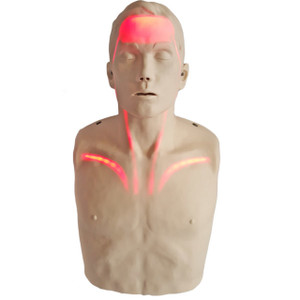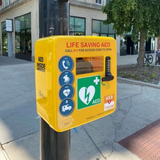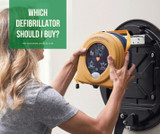Learn how to save a life - How to do CPR
With up to 60,000 people a year dying in the UK due to a sudden cardiac arrest, delivering safe and effective CPR is so important and is so easy to learn. It can be achieved in six simple steps regardless of whether you have had training or not. If you are with someone who suddenly falls unconscious and has stopped breathing or has stopped breathing normally, you must first shake and shout.
Gently shaking someone by the shoulders and asking loudly if they are okay allows you to establish if they are conscious or not. You should also shout for help for any passers by as you may need their assistance, you shouldn’t however, leave the person who has fallen ill.
Once you have raised the alarm, you should next check their breathing. Keeping their head tilted backwards, you can see if the person is breathing normally by looking for regular chest movements, listening for their breathing and feeling their breath on your cheek. You should however only look, listen and feel for no longer ten seconds as you do not have precious time to waste. I you are certain the person is breathing normally, put them into the recovery position and call 999, if breathing is not normal, you must open the airway by gently holding the forehead and tilting the head back whilst having two fingers under their chin.
Once their airway is open, you should immediately ask someone to call 999 and ask someone for a public access defibrillator (PAD) - if no-one is around, call 999 before delivering CPR. Following this, start CPR by giving thirty chest compressions. To do this, kneel next to the victim, place the heal of your hand on the center of their chest and your other hand on top so that your fingers can interlock. With straight arms, use the heal of your palm to push down firmly by five to six centimeters on the breastbone, then release, these compressions should be carried out at around two per second.
It is however, important to remember that a defibrillator can only help someone who has suffered a sudden cardiac arrest if a pulse is present, even if this is irregular. As PAD’s work to restore the hearts rhythm back to it’s normal pace, they unfortunately cannot shock a heart that has stopped, back into beating as usual.
Remember, the use of CPR can significantly increase the chances of survival from someone who has suffered a cardiac arrest so delivering chest compressions followed by rescue breaths can really make the difference between life and death.
After you have given the person thirty chest compressions, you should give two rescue breaths. When giving chest compressions, you must push rather hard onto the victims chest in order to deliver effective CPR. When delivering this life saving care, it is essential to deliver enough pressure in order to help the heart start beating again. Although this sounds daunting, delivering compressions deeply enough means that you are helping to pump the heart hard enough in order to get it pumping at it’s original pace. Rescue breaths can be done by opening the airway as highlighted before and then softly pinching their nose, take a normal breath, make a seal around their mouth with yours and breathe out. You can tell if you have done this successfully as the victims chest should rise and fall, take your mouth away whilst keeping their head tilted back and deliver another rescue breath. Delivering two rescue breaths should not take any longer than five seconds.
After giving two rescue breaths, the final step is to repeat all of these steps until the ambulance service arrives. Repeat thirty compressions followed by two rescue breaths. You should keep doing this either until professional medical help arrives or the person begins to show signs of consciousness such as coughing, waking up, opening their eyes or breathing normally. Delivering CPR can be very tiring so if there is someone nearby to help, take it in turns so it can be spread between more people.
Recent Posts
-
Empowering Communities: The Lifesaving Impact of CPR on Restart a Heart Day
Every year, on and around October 16th, an important event takes place - Restart a Heart Day. This a …16th Oct 2023 -
Which home defibrillator?
80% of all out of hospital cardiac arrests occur at home. Defibrillators are often available in loca …4th Dec 2022 -
Which defibrillator should I buy?
There are many defibrillators available on the market and it can become overwhelming knowing which o …4th Nov 2022




